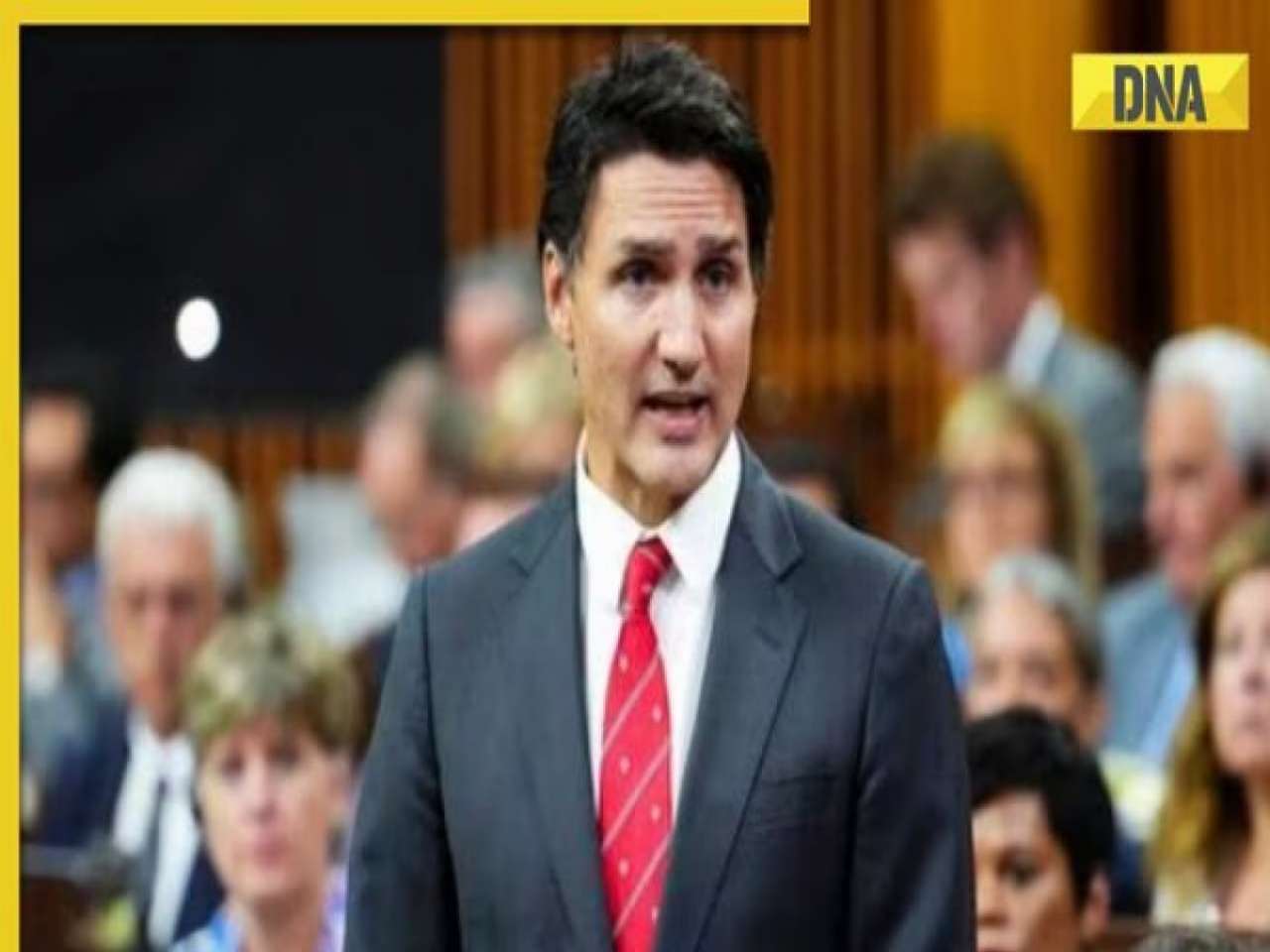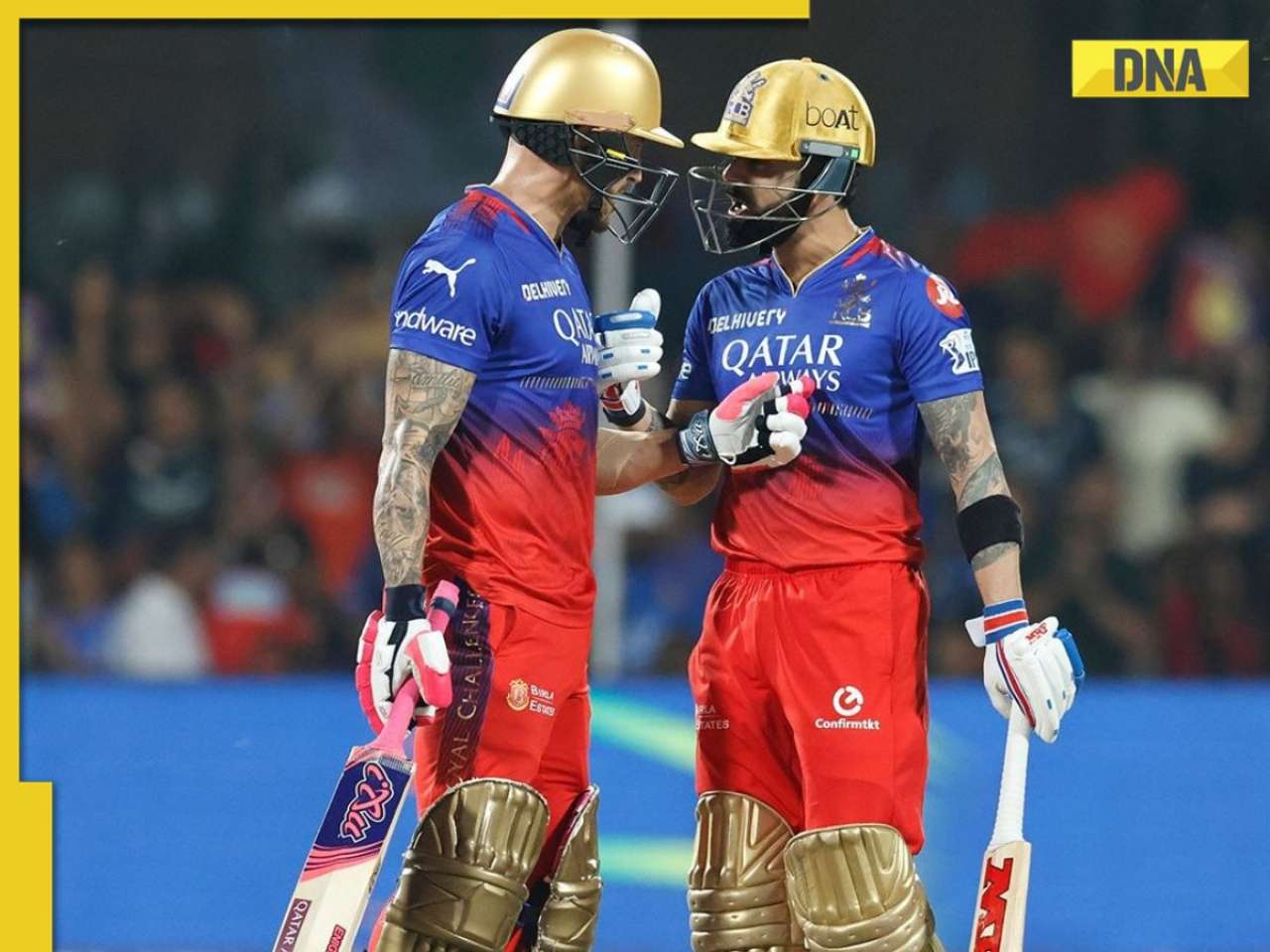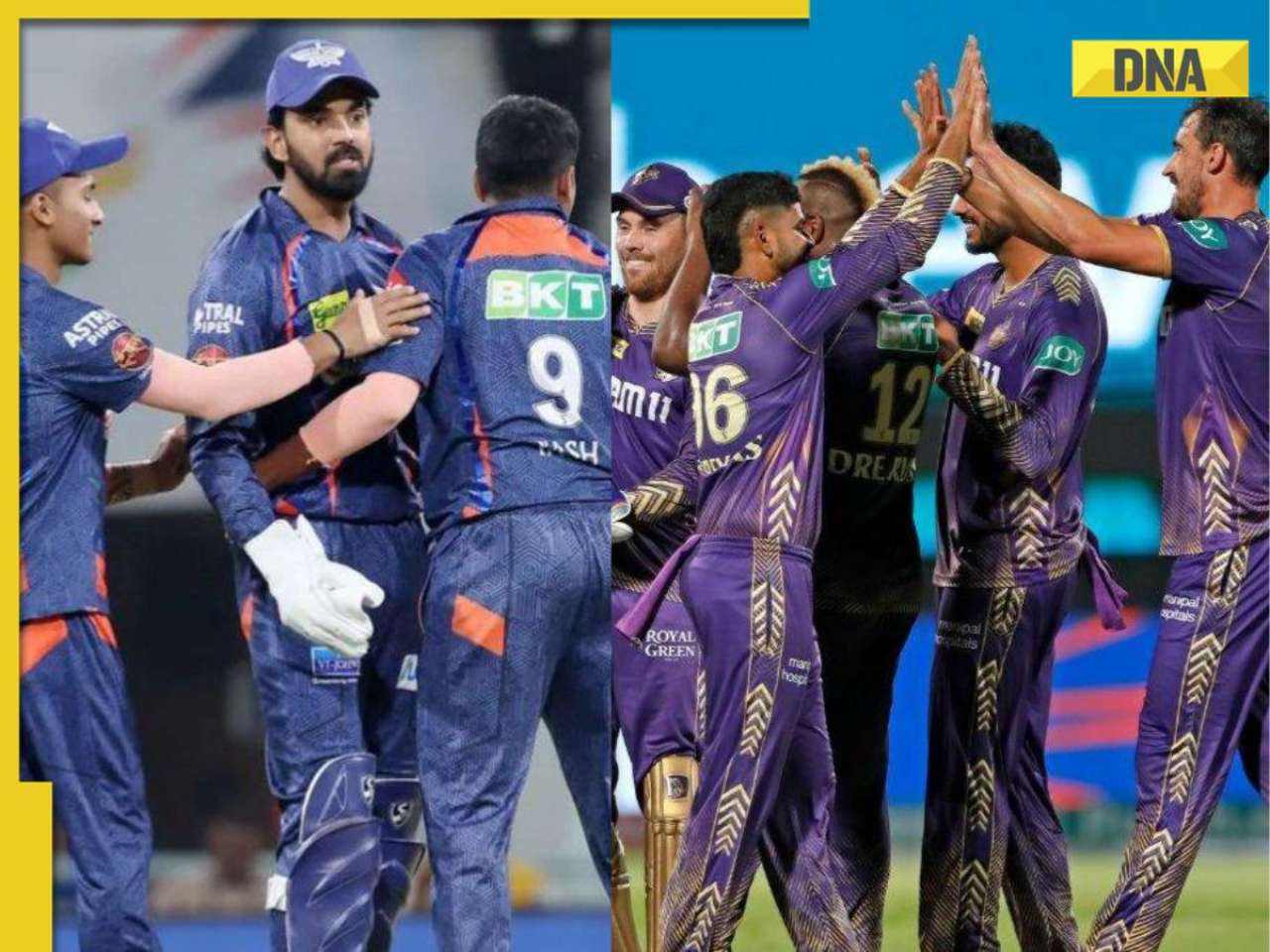A DNA-IMRS opinion poll shows that the Modi-led government's overall performance score is a relatively high 6.56 on a 10-point scale.
MUMBAI: For a chief minister who has served a full five years, Narendra Modi does reasonably well on the performance ratings front, seemingly bucking the one factor that professional politicians dread the most — anti-incumbency.
A DNA-IMRS opinion poll shows that the Modi-led government's overall performance score is a relatively high 6.56 on a 10-point scale.
The government's performance was ranked on ten parameters — industrial growth, infrastructure development, agricultural growth, law and order, safety of minorities, economic growth, issue of reservations, creating jobs, eradicating poverty and controlling inflation.
Significantly, Modi's ratings (6.87/10) are higher on macro-economic issues — industrial growth, infrastructure development, agricultural growth, economic growth — and lower( 6.0/10) on micro-economic issues — creating jobs, eradicating poverty and controlling inflation — that affect the common man.
What the figures indicate is that though at the ground-level, Modi's claims about ensuring Gujarat's development seem to be taken seriously, on daily bread and butter issues—often the deciding factor at the polling booth—his sheen seems to lose a coat.
In fact, the contrast turned sharper and starker when the sample was asked to respond to the same issues with the option of multiple choice answers, including 'neither agree nor disagree'. As a statistical measuring tool, a scale technically doesn't give respondent the option to have no opinion on an issue or a subject.
In percentage terms, Modi's ratings plummet on the three crucial bread and butter issues. Only 34% think that Modi's government has successfully tackled inflation.
A substantial 47% feel that Modi could have done better. Similarly on eradicating poverty and creating more jobs, only 39% and 47% respectively feel Modi has done a good job.
It’s significant that on the three crucial quality-of-life issues, Modi scores less than 50%. It may well turn out to be a negative vote for Modi at the polling booth. But on macro-economic issues, Modi seems to be on sublime touch.
He rakes in high scores for his handling of industrial growth (63%), infrastructure development (56%), agricultural growth (56%) and economy (52%).
Significantly, he also scores quite high on the law and order front (56%) and safety of minorities (54%), a perception which matches with what Modi has been projecting over the last five years that Gujarat is a safe place.
But what can unsettle Modi are the differences between men and women, and Hindus and minorities. Men give higher ratings to Modi than women on almost all macro-economic, micro-economic and security issues.
On the issue of industrial growth, men give the Modi-led government an approval rating of 65%, two percentage points more than the overall rating, while women give his government a substantially lower 53% approval rating, a full 12 percentage point dip than that given by men.
Similarly, while men give Modi a good 58% rating for his handling of agricultural growth, again two percentage points more than the overall rating, just 51% of women give their nod. Once again, the difference between men and women is a substantial 7 percentage points.
On micro-economic issues, women have been more scathing than men about Modi's performance. On inflation, creating jobs and eradicating poverty, women have been critical of Modi's performance, so much that on inflation, Modi has got less than 30% rating.
Not only are men and women rating Modi differently on bread and butter issues, the gap between them is also more. For instance, the differential rating of men and women on inflation (35% and 26% respectively) leads to a substantial 9 percentage point difference. Similarly, on poverty eradication, the differential rating of men and women (44% and 31% respectively) leads to a whopping 13 percentage point difference (see accompanying graphic).
The disenchantment in Kutch, discussed in the sister story, is also seen in the way the region has rated Modi's performance. Modi doesn't cross 50% rating on any of the ten parameters, the highest being 48% for industrial growth.
It's this dissonance in perception about Modi's efficacy that the BJP will have to guard against in the coming days. A substantial turnout of women voters might hurt Modi, and if the Congress manages to translate this dissatisfaction among both men and women into votes, it might well end up with more seats than what its projected vote share of 41% is expected to yield.
Women, however, might be the lesser of Modi's problems. The vast difference in ratings between Hindus and minorities is, quite obviously, the bigger headache.
On every single issue, Modi fails to cross even the 40% mark, the highest rating of 39% being given for his efforts at ensuring the state's industrial growth. Hindus, on the other hand, have given scores that are more in line with the overall ratings — highest rating of 67% for industrial growth and lowest of 33% for controlling inflation (see accompanying graphic).
Quite obviously, the minority community doesn't see eye-to-eye with Modi, and this is where Congress's big opportunity lies. If the party can mobilise the minority community effectively, ensure their large turnout and combine it with a large-scale mobilisation of women voters, the battle for Gujarat can well see a different finish.
![submenu-img]() 'They unilaterally took some measures': EAM Jaishankar on new Nepal 100 rupee currency
'They unilaterally took some measures': EAM Jaishankar on new Nepal 100 rupee currency![submenu-img]() Meet Ice Cream Lady of India, who built Rs 6000 crore company, started with small investment of Rs…
Meet Ice Cream Lady of India, who built Rs 6000 crore company, started with small investment of Rs…![submenu-img]() ‘Canada a rule-of-law country’: PM Trudeau after 3 Indian arrested over Hardeep Nijjar's murder
‘Canada a rule-of-law country’: PM Trudeau after 3 Indian arrested over Hardeep Nijjar's murder![submenu-img]() Viral video: Specially-abled girl’s energetic dance to Bollywood song wows internet, watch
Viral video: Specially-abled girl’s energetic dance to Bollywood song wows internet, watch![submenu-img]() 'Baap re baap': Imtiaz Ali reveals Diljit Dosanjh was scandalised by old women's 'vulgar' improvisation on Chamkila set
'Baap re baap': Imtiaz Ali reveals Diljit Dosanjh was scandalised by old women's 'vulgar' improvisation on Chamkila set![submenu-img]() DNA Verified: Is CAA an anti-Muslim law? Centre terms news report as 'misleading'
DNA Verified: Is CAA an anti-Muslim law? Centre terms news report as 'misleading'![submenu-img]() DNA Verified: Lok Sabha Elections 2024 to be held on April 19? Know truth behind viral message
DNA Verified: Lok Sabha Elections 2024 to be held on April 19? Know truth behind viral message![submenu-img]() DNA Verified: Modi govt giving students free laptops under 'One Student One Laptop' scheme? Know truth here
DNA Verified: Modi govt giving students free laptops under 'One Student One Laptop' scheme? Know truth here![submenu-img]() DNA Verified: Shah Rukh Khan denies reports of his role in release of India's naval officers from Qatar
DNA Verified: Shah Rukh Khan denies reports of his role in release of India's naval officers from Qatar![submenu-img]() DNA Verified: Is govt providing Rs 1.6 lakh benefit to girls under PM Ladli Laxmi Yojana? Know truth
DNA Verified: Is govt providing Rs 1.6 lakh benefit to girls under PM Ladli Laxmi Yojana? Know truth![submenu-img]() Streaming This Week: Heeramandi, Shaitaan, Manjummel Boys, latest OTT releases to binge-watch
Streaming This Week: Heeramandi, Shaitaan, Manjummel Boys, latest OTT releases to binge-watch![submenu-img]() Remember Ayesha Kapur? Michelle from Black, here's how actress, nutrition coach, entrepreneur looks after 19 years
Remember Ayesha Kapur? Michelle from Black, here's how actress, nutrition coach, entrepreneur looks after 19 years![submenu-img]() Remember Heyy Babyy's cute 'Angel' Juanna Sanghvi? 20 year-old looks unrecognisable now, fans say 'her comeback will...'
Remember Heyy Babyy's cute 'Angel' Juanna Sanghvi? 20 year-old looks unrecognisable now, fans say 'her comeback will...'![submenu-img]() In pics: Arti Singh stuns in red lehenga as she ties the knot with beau Dipak Chauhan in dreamy wedding
In pics: Arti Singh stuns in red lehenga as she ties the knot with beau Dipak Chauhan in dreamy wedding![submenu-img]() Actors who died due to cosmetic surgeries
Actors who died due to cosmetic surgeries![submenu-img]() DNA Explainer: Why Harvey Weinstein's rape conviction was overturned, will beleaguered Hollywood mogul get out of jail?
DNA Explainer: Why Harvey Weinstein's rape conviction was overturned, will beleaguered Hollywood mogul get out of jail?![submenu-img]() What is inheritance tax?
What is inheritance tax?![submenu-img]() DNA Explainer: What is cloud seeding which is blamed for wreaking havoc in Dubai?
DNA Explainer: What is cloud seeding which is blamed for wreaking havoc in Dubai?![submenu-img]() DNA Explainer: What is Israel's Arrow-3 defence system used to intercept Iran's missile attack?
DNA Explainer: What is Israel's Arrow-3 defence system used to intercept Iran's missile attack?![submenu-img]() DNA Explainer: How Iranian projectiles failed to breach iron-clad Israeli air defence
DNA Explainer: How Iranian projectiles failed to breach iron-clad Israeli air defence![submenu-img]() 'Baap re baap': Imtiaz Ali reveals Diljit Dosanjh was scandalised by old women's 'vulgar' improvisation on Chamkila set
'Baap re baap': Imtiaz Ali reveals Diljit Dosanjh was scandalised by old women's 'vulgar' improvisation on Chamkila set![submenu-img]() This actor, who worked with Karan Johar and Farhan Akhtar, gave superhit shows, saw failed marriage, killed himself at..
This actor, who worked with Karan Johar and Farhan Akhtar, gave superhit shows, saw failed marriage, killed himself at..![submenu-img]() Did you know Ranveer Singh's grandmother was popular actress? Worked with Raj Kapoor; her career affected due to...
Did you know Ranveer Singh's grandmother was popular actress? Worked with Raj Kapoor; her career affected due to...![submenu-img]() India's highest-paid TV actress began working at 8, her Bollywood films flopped, was seen in Bigg Boss 1, now charges...
India's highest-paid TV actress began working at 8, her Bollywood films flopped, was seen in Bigg Boss 1, now charges...![submenu-img]() Shreyas Talpade wonders if his heart attack was due to Covid vaccine: 'We don’t know what we have taken inside...'
Shreyas Talpade wonders if his heart attack was due to Covid vaccine: 'We don’t know what we have taken inside...'![submenu-img]() IPL 2024: Faf du Plessis, Virat Kohli help Royal Challengers Bengaluru defeat Gujarat Titans by 4 wickets
IPL 2024: Faf du Plessis, Virat Kohli help Royal Challengers Bengaluru defeat Gujarat Titans by 4 wickets![submenu-img]() IPL 2024: Why is Sai Kishore not playing today's RCB vs GT match?
IPL 2024: Why is Sai Kishore not playing today's RCB vs GT match?![submenu-img]() 'Mumbai Indians ki kahani khatam': Ex-India star slams Hardik Pandya after MI's loss to KKR at Wankhede
'Mumbai Indians ki kahani khatam': Ex-India star slams Hardik Pandya after MI's loss to KKR at Wankhede![submenu-img]() LSG vs KKR, IPL 2024: Predicted playing XI, live streaming details, weather and pitch report
LSG vs KKR, IPL 2024: Predicted playing XI, live streaming details, weather and pitch report![submenu-img]() LSG vs KKR IPL 2024 Dream11 prediction: Fantasy cricket tips for Lucknow Super Giants vs Kolkata Knight Riders
LSG vs KKR IPL 2024 Dream11 prediction: Fantasy cricket tips for Lucknow Super Giants vs Kolkata Knight Riders![submenu-img]() Viral video: Specially-abled girl’s energetic dance to Bollywood song wows internet, watch
Viral video: Specially-abled girl’s energetic dance to Bollywood song wows internet, watch![submenu-img]() Viral video: Man educates younger brother about mensuration, internet is highly impressed
Viral video: Man educates younger brother about mensuration, internet is highly impressed![submenu-img]() Girl's wedding dance to Haryanvi song interrupted by mother in viral video, internet reacts
Girl's wedding dance to Haryanvi song interrupted by mother in viral video, internet reacts![submenu-img]() Viral video: Man fearlessly grabs dozens of snakes, internet is scared
Viral video: Man fearlessly grabs dozens of snakes, internet is scared![submenu-img]() This mysterious mobile phone number was suspended after three users...
This mysterious mobile phone number was suspended after three users...

















































)
)
)
)
)
)